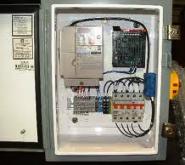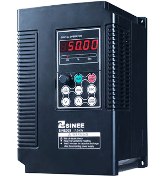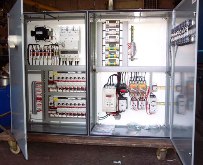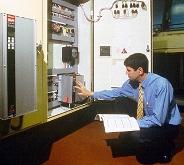Electric drive control systems
 Functions of electric drive control systems, their classification and requirements for them
Functions of electric drive control systems, their classification and requirements for them
Management tasks electric drives are: starting, speed control, stopping, reversing the working machine, maintaining its operating mode in accordance with the requirements of the technological process, controlling the position of the working body of the machine. At the same time, the highest productivity of the machine or mechanism, the lowest capital costs and energy consumption must be ensured.
The design of the working machine, the type of electric drive and its control system are interconnected. Therefore, the selection, design and research of the electric drive control system should be carried out taking into account the construction of the working machine, its purpose, characteristics and working conditions.
In addition to the main functions, electric drive control systems can perform some additional functions, which include signaling, protection, blocking, etc. Control systems usually perform several functions at the same time.
 Electric drive control systems are divided into different groups depending on the main characteristic that underlies the classification.
Electric drive control systems are divided into different groups depending on the main characteristic that underlies the classification.
According to the method of control, it distinguishes between manual, semi-automatic (automated) and automatic control systems.
Guidance is called control, in which the operator directly affects the simplest control devices. The disadvantages of such control are the need to locate devices near the electric drive, the mandatory presence of an operator, the low accuracy and speed of the control system. Therefore, manual control is of limited use.
The office is called semi-automatic if it is performed by the operator by influencing various automatic devices that perform separate operations. At the same time, high control accuracy is ensured, the possibility of remote control and operator fatigue are reduced. However, with such control, performance is limited as the operator may take time to decide on the required control mode depending on the changed operating conditions.
 The office is called automated if all control operations are performed by automatic devices without direct human involvement.In this case, the greatest speed and accuracy of control of the automatic control system is provided, since the development of automation means is becoming more and more widespread.
The office is called automated if all control operations are performed by automatic devices without direct human involvement.In this case, the greatest speed and accuracy of control of the automatic control system is provided, since the development of automation means is becoming more and more widespread.
By the nature of the main functions performed in the production process, systems for semi-automatic and automatic control of electric drives can be divided into several groups.
The first group includes systems that provide automatic start, stop and reversal of the electric drive. The speed of these devices is not variable, so they are called fixed devices. Such systems are used in electric drives of pumps, fans, compressors, conveyors, winches for auxiliary machines, etc.
The second group includes control systems that, in addition to performing the functions provided by the systems of the first group, allow speed regulation of electric drives. Electric drive systems of this type are called adjustable and are used in lifting devices, vehicles and etc.
The third group includes control systems that, in addition to the above functions, provide the ability to regulate and maintain certain accuracy, constancy of various parameters (speed, acceleration, current, power, etc.) under changing production conditions. Such automatic control systems, usually containing feedback, are called automatic stabilization systems.
 The fourth group includes systems that provide tracking of a control signal whose law of change is not known in advance.Such electric drive control systems are called tracking systems… The parameters that are usually monitored are linear motions, temperature, amount of water or air, etc.
The fourth group includes systems that provide tracking of a control signal whose law of change is not known in advance.Such electric drive control systems are called tracking systems… The parameters that are usually monitored are linear motions, temperature, amount of water or air, etc.
The fifth group includes control systems that ensure the operation of individual machines and mechanisms or entire complexes according to a predetermined program, the so-called. software systems.
The first four groups of electric drive control systems are usually included as components in the fifth group system. In addition, these systems are equipped with software devices, sensors and other elements.
The sixth group includes control systems that provide not only automatic control of electric drives, including systems from the first five groups, but also automatic selection of the most rational operating modes of machines. Such systems are called optimal control systems or self-regulating systems... Usually they contain computers that analyze the course of the technological process and generate command signals that ensure the most optimal mode of operation.
 Sometimes a classification of automatic control systems is made according to the type of apparatus used... So there are relay-contactor, electric, magnetic, semiconductor systems. The most important additional control function is protection of the electric drive.
Sometimes a classification of automatic control systems is made according to the type of apparatus used... So there are relay-contactor, electric, magnetic, semiconductor systems. The most important additional control function is protection of the electric drive.
The following basic requirements are imposed on automatic control systems: provision of the operating modes necessary for the execution of the technological process by a machine or mechanism, simplicity of the control system, reliability of the control system, economy of the control system, determined by the cost of equipment, energy costs, as well as reliability, flexibility and ease of management, ease of installation, operation and repair of control systems...
If necessary, additional requirements are imposed: explosive safety, intrinsic safety, noiselessness, vibration resistance, significant accelerations, etc.
